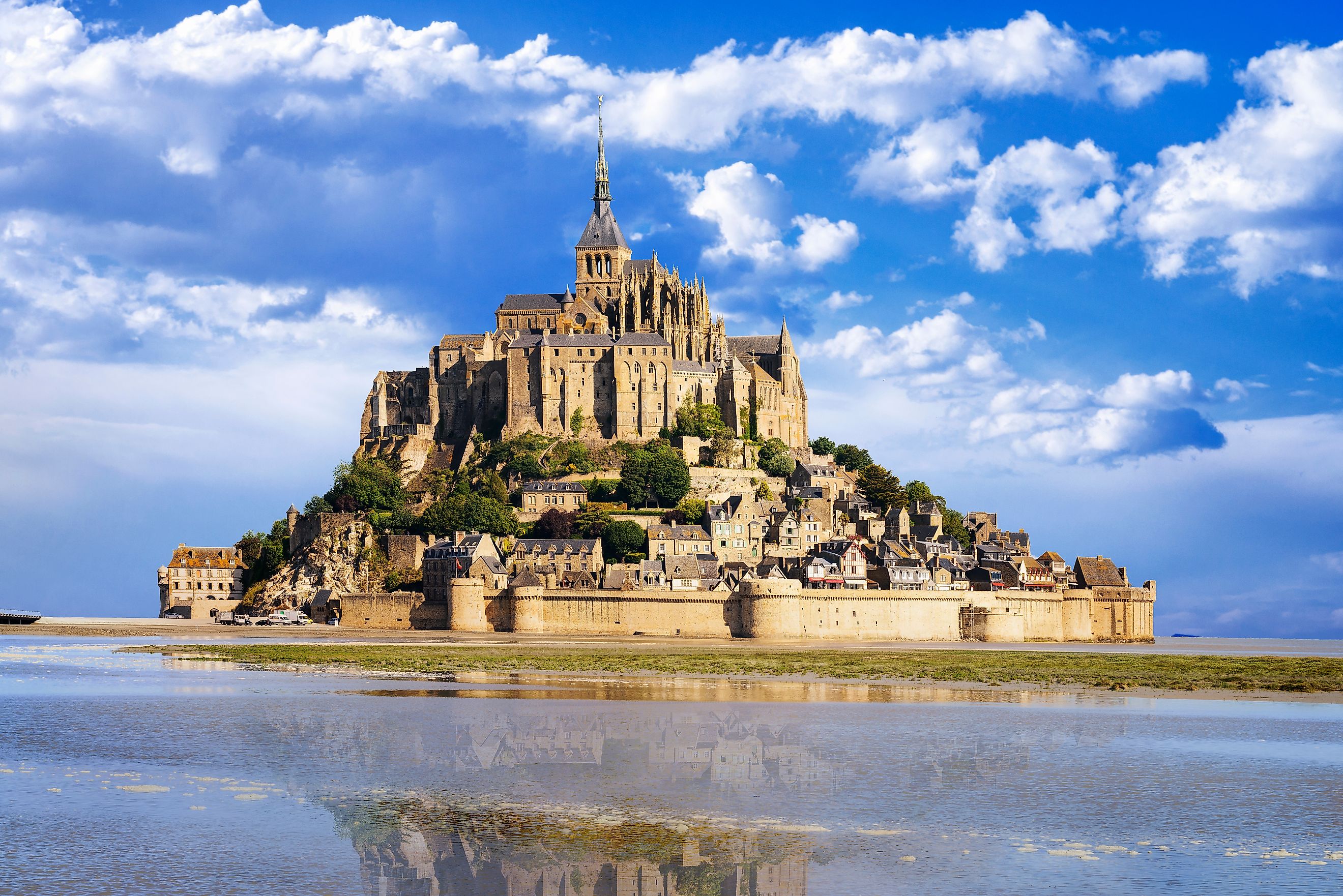
8 Whimsical Towns in France
France has long been recognized as a treasure trove of charming villages, each flourishing with history, wine, and culture. These eight towns are a Francophile’s paradise, showcasing a variety of whimsical attractions and fairytale-like sceneries that seem like they came straight from a storybook. From medieval fortresses in Saint-Paul-de-Vence to the painters’ havens in Giverny, these enchanting destinations promise cameras full of breathtaking experiences. So, take a seat, pour a glass of your favorite wine, and plan your next adventure.
Saint-Paul-de-Vence
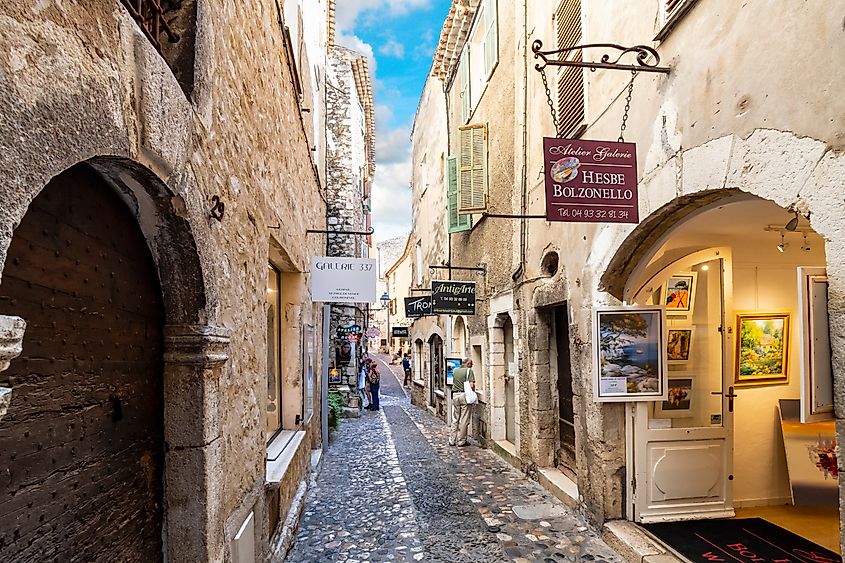
On a hilltop overlooking the Mediterranean, Saint-Paul-de-Vence is a commune in the Alpes-Maritimes department of the Provence-Alpes-Côte d’Azur region. Considered one of the oldest villages in the French Rivera, it was once a medieval fortress. Consequently, it has a captivating history; the stone-walled Old Town is home to 300 locals, while the remaining 3,500 residents live outside the medieval city in the valleys below.
The village’s picturesque villas and narrow cobblestone streets were once frequented by over twenty artistic masters, as the town became a paradise for artists during the Impressionist movement during the 1920s. Saint-Paul-de-Vence was once home to artists such as Picasso, Raverat, and Conte, though Chagall is the most associated painter with the town as he painted the murals in the Catholic Cathedral of Our Lady of the Nativity at Vence. This Chapel, open to the public, is considered one of Chagall's greatest works. Today, the artistic community still thrives, featuring a litany of galleries throughout the village.
A pedestrian-only village, Saint-Paul-de-Vence does not allow cars or bikes, encouraging visitors to explore its narrow streets on foot. Hidden sculptures are tucked away in the enclaves as explorers move inward towards the public square, where Place de la Grande Fontaine sits. A pillar of the community since the 17th century, the historic fountain was originally used for drinking water and washing with the help of ancient aqueducts. Visitors can also walk the wall surrounding the Old Town, which has protected the village since the 1500s.
Carcassonne
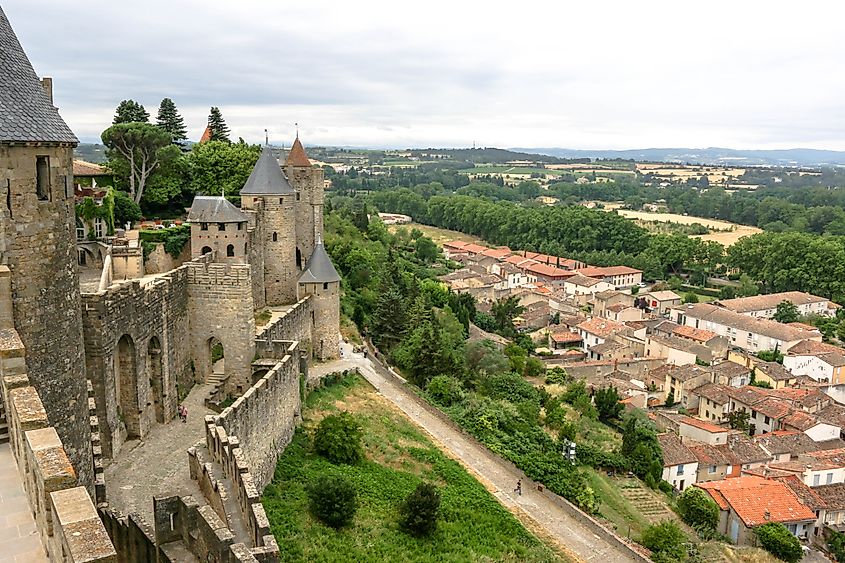
On a rocky outcrop, Carcassonne is one of the largest citadels in Europe, featuring stone ramparts, winding alleys, turrets, and a moat that takes you back in time. The UNESCO World Heritage site has been a fortified medieval city with a massive defensive system since the Roman period. The city is divided into two sections, separated by barriers that enclose its houses, streets, cathedral, and castle. Most tourists head straight to the iconic Château Comtal, a 12th-century Counts’ castle, and the inspiration behind the castle in Disney’s Sleeping Beauty. The town center, the Bastide Saint-Louis, is alive with bustling markets, shops, and restaurants, offering colorful sceneries that accentuate the medieval features within the city.
The Saint-Naraire Cathedral boasts 13th-century stained glass windows, offering the same aesthetic it held during the Middle Ages. Carcassonne further reflects its dramatic history within architecture, from private mansions and religious buildings to museums, arts centers, and gardens. Saint Vincents Church showcases its Languedoc Gothic architecture, featuring 15th-century stained glass rosettes and windows, as well as 17th-century tables, lecterns, and paintings by artists Gamelan, Mignard, and Subleyras. Lastly, the local Fine Arts Museum houses a collection of European art from the 17th century spanning to the present day and offers tours for groups by appointment.
Mont-Saint-Michel
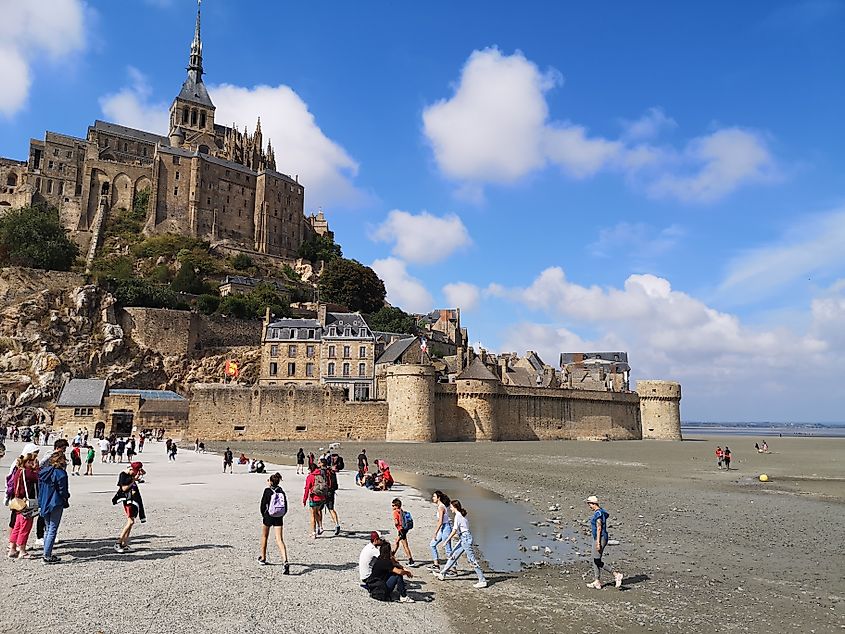
Considered one of France’s most stunning sites, Mont-Saint-Michel is a tidal island located at the mouth of the Couesnon River. The UNESCO World Heritage site is home to a 1,000+-year-old abbey that is surrounded by the bay during high tide. As a pilgrimage destination, the island has been regarded as a holy land since the bishop claimed that Archangel Michael pressured him to build a church there. In the 10th century, the Dukes of Normandy, as well as the French kinds, supported the establishment of the Mont-Saint-Michel Abbey, which later inspired Rapunzel’s castle in Disney’s Tangled. Those interested can explore the Great Halls, multiple stores, a monastery, and an abbey at their own leisure. Today, the steep village streets remain lined with well-preserved historic buildings, many of which have since been converted into museums, restaurants, hotels, and shops, such as the iconic 1879 La Mère Poulard.
Giverny
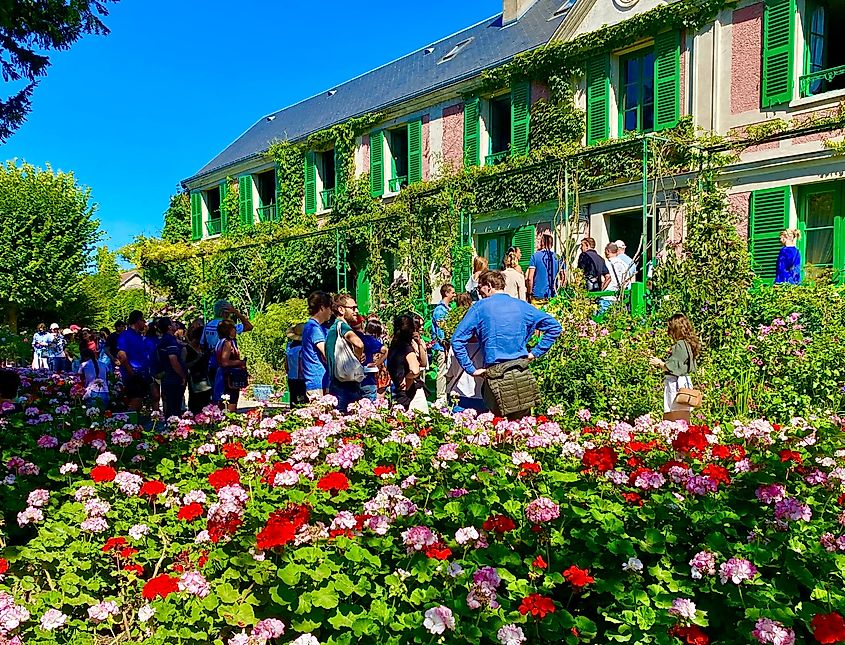
Settled on the banks of the Seine, Giverny is a village in the Normandy region of Northern France. In 1887, a litany of foreign painters settled in Giverny, making it their home for 30 years. Over 100 artists flocked to the beautiful village, deeply influenced by impressionist techniques. Giverny is best known as the location of Claude Monet’s former home and gardens, where the artist lived from 1883 until his passing in 1926.
Monet’s picturesque waterlily garden and home have since become the Fondation Claude Monet Museum, located not far from the Musseé des Impressionnismes Giverny. Both highlight the Impressionist movement. Monet’s famous gardens are divided into two parts: the front garden, or Clos Normand, and the Japanese-inspired waterlily garden on the other side of the road. The gardens complement each other, and it took the community almost ten years to restore the property to its former glory. A fun fact: the wisteria that Monet planted can still be seen growing today. Visitors can wander through the village and take guided tours of the property, walking in the footsteps of one of the world’s most iconic impressionist painters and experiencing a glimpse into the whimsical world Monet saw every day.
Pérouges
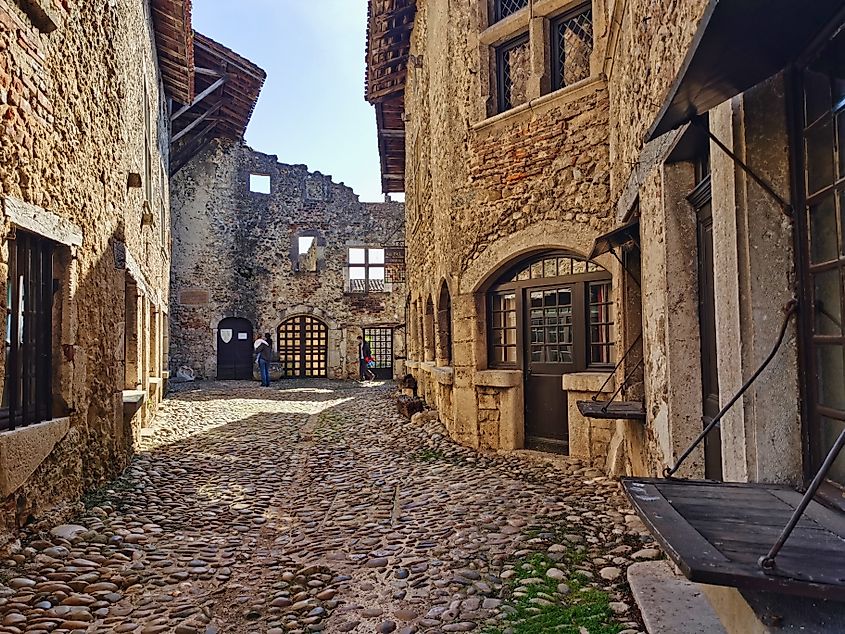
Step back in time in Pérouges, featuring architecture from the Middle Ages, cobbled streets, and stone buildings adorned with picturesque crawling vines. Pérouges is a preserved village, home to only 80 residents living within the medieval city walls, while its 1,200 other residents live in the town that’s spread outside of the city limits. Considered one of the most beautiful villages in France, Pérouges was a filming location for The Three Musketeers.
Each year, during the second week of June, the village hosts a festival inviting visitors to come to experience the medieval city in all its glory. The celebration features locals dressed in medieval garb, with dozens of tents showcasing demonstrations by nobles, peasants, merchants, innkeepers, and medieval bakers. Visitors can answer the town crier's beckoned call and enjoy events like animal shows, combat demonstrations with full armor and swords, and an evening fire show. The parade is a procession of elegantly dressed nobles, musicians, armed men, and knights, ending with misfits and beggars for the full effect.
After the Renaissance, Pérouges fell into disrepair until the artists' movement in 1911. One local, living in one of the last six inhabited houses in the old city, helped garner initiative from the Minister of Fine Art and restored the city to its former glory to welcome artisans of the modern day to its historic streets. Guided tours allow visitors to explore iconic locations, including the Sainte Marie Madeleine Church, tucked into the old city's ramparts, and Maison des Princes, a 14th- and 15th-century mansion. The local museum within the mansion hosts permanent exhibitions of historical objects and archives.
Roussillon
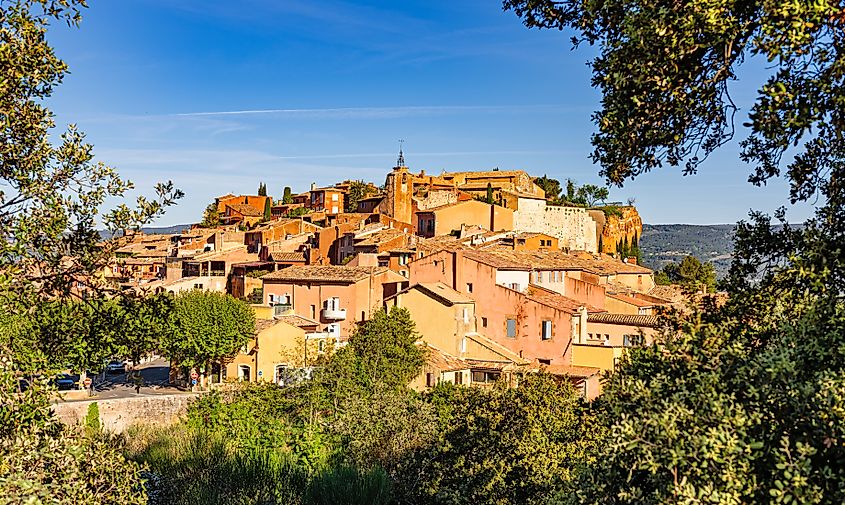
Found in the valleys of the Luberon region, Roussillon is home to one of the largest ochre deposits in the world. The houses along the town’s winding streets are painted in stunning reds, yellows, oranges, and pinks— boasting many different shades of color that would amaze any painter. While the ochre mined from the quarry was primarily used in paints, it is no longer an actively used source. However, tourists can walk through the quarry to experience its otherworldly beauty. Visitors can also explore Le Conservatoire des Ocres et Pigments Appliqués, housed in an old ochre processing factory, where exhibitions delve into the history of ochre.
No one is certain what led to the presence of such a unique geological feature. The official explanation is that the Luberon was once beneath the sea, and the color of the ochre is caused by goethite, a mineral named after German writer and mineralogist Johann Wolfgang von Goethe. However, the reason for the variation in color remains a mystery. The local legend, however, is a much darker tale. It’s believed that during the Middle Ages, a married woman fell in love with a local troubadour while her husband, the current Lord of Roussillon, was away hunting. When the Lord discovered the affair, he cut out the troubadour’s heart and served it to his wife for dinner. When the Lord told his wife what she was eating, in her anguish, she threw herself from the top of the Roussillon, and the land would be stained with the red of her blood forever.
Despite its small size, Roussillon boasts more restaurants than locals, offering delightful culinary bites in the town center. Notable spots include La Grappe de Raisin and Restaurant Omma, both known for their rustic ambiance and delicious food.
Saint-Jean-Cap-Ferrat
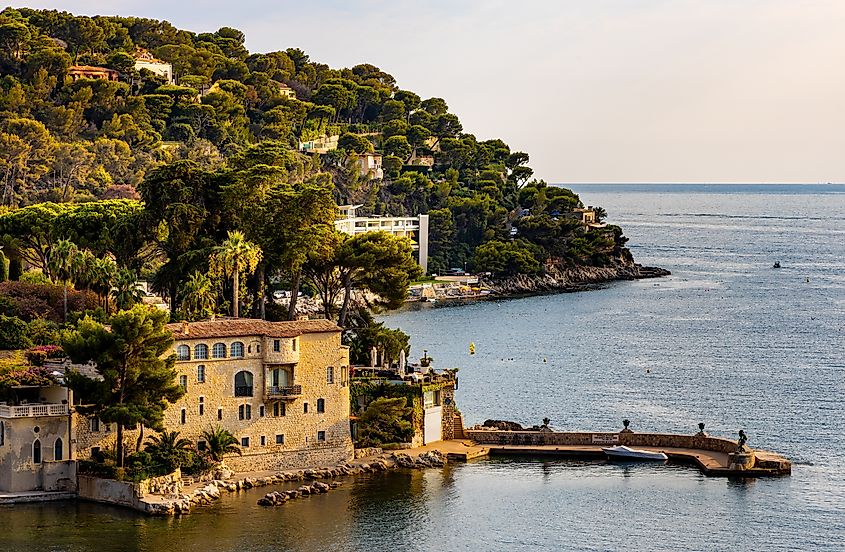
A hamlet found in the Alpes-Maritimes department of the Provence-Alpes-Côte-d’Azur, Saint-Jean-Cap-Ferrat was originally a fishing and farming village before the 19th century. However, after the creation of an artificial lake, the plant life diversified dramatically, transforming the village into a favorite vacation spot for rich dignitaries. As the town flourished as a luxurious getaway, foreign families were drawn in by its mild climate and picturesque surroundings. These wealthy patrons built grand estates and spawned the growth of luxury hotels, shifting the economy into an upscale spa retreat.
One of the most iconic estates built during the height of this era is Villa Ephrussi, a Renaissance-inspired palace commissioned by Baroness Béatrice de Rothschild. Now a historic monument, the villa showcases private apartments designed in both Florentine and Venetian styles and houses a collection of period furniture, paintings, sculptures, and more. The estate’s gardens feature nine landscaped parks, each with a distinct style and offering breathtaking views of the coast and bay. The oldest of these estates is the Fleur du Cap villa, which once hosted figures such as Charlie Chaplin and David Niven. Visitors can explore a variety of Saint-Jean-de-Cap-Ferrat’s coastal heritage by walking the mile-long interpretation trail at Saint-Hospice-Point. The walk features six observation points and weaves through attractions like Saint-Hospice-Chapel and its accompanying bronze Madonna statue. The trail offers panoramic views of Cap-Martin and Monaco.
Gordes
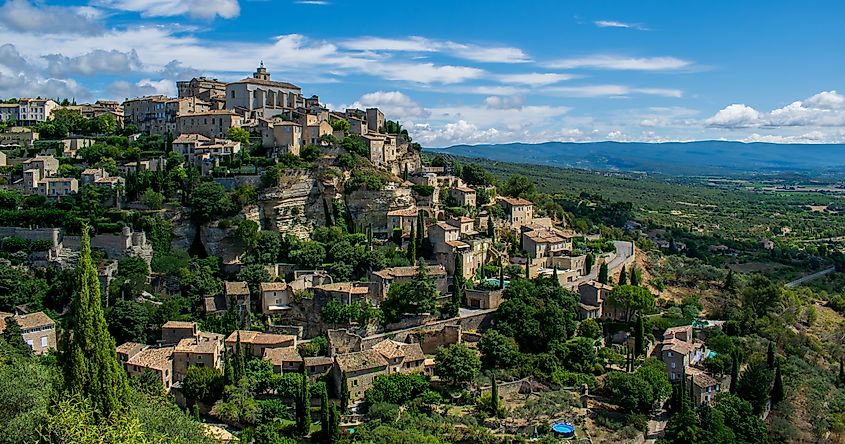
In the foothills of the Monts of Vaucluse, the hilltop village of Gordes enchants visitors with its cobbled streets and white stone buildings driven into the mountainside. The alleyways and arcades feature a variety of culinary delights, accompanied by a vibrant art scene shaped by renowned artists like Lhote, Chagall, Vasarely, and Mara, who all spent time in this fantastical enclave.
At the heart of the village stands the imposing Château de Gordes, a towering castle that has been a historical monument since 1031. The former medieval fortress is linked to one of the oldest families in the region and has been overlooking the valley for nearly 1,000 years, protecting the village with its stature. Visitors can also see the breathtaking Sénanque Abbey, with its 12th-century Romanesque architecture and small bell towers. The Abbey, which has survived for 900 years, is surrounded by a picturesque lavender field that the resident monks maintain and cultivate to sell and support the local community.
Uniquely, Gordes is also home to the Village des Bories, a historical monument and museum of rural habitat that showcases a hamlet of dry-stone huts called “clapas.” These stone huts are believed to be temporary housing used for seasonal agricultural occupations. Gordes was also awarded the Croix de Guerre medal for its valiance during World War II when the village suffered significant damage.
Closing Remarks
These eight whimsical towns offer something truly spectacular for every traveler, whether drawn to medieval charm, artistic backdrops, or captivating history. Each destination, aged like fine wine, invites travelers to step back into legend, a world where time slows down and a story is around every corner. When planning a trip through France, be sure to leave room for a little whimsy, as one can never know what enchanting discoveries await.











